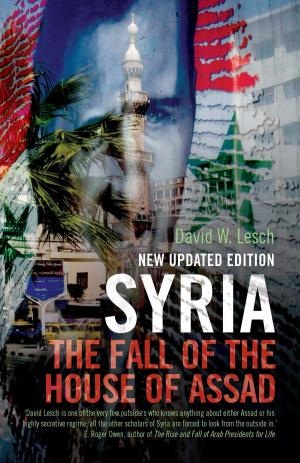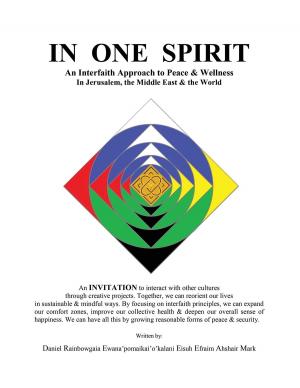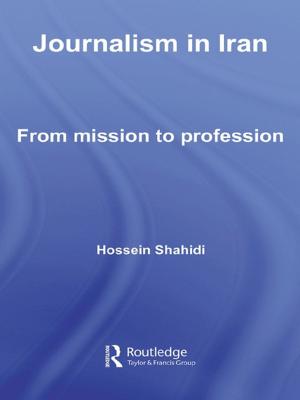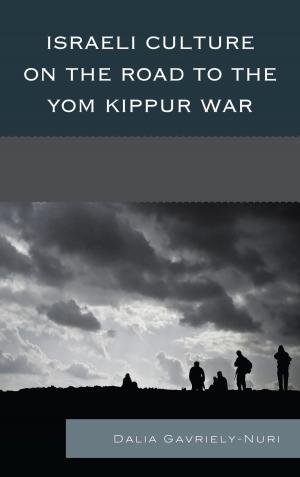| Author: | Brendon J. Cannon | ISBN: | 9783939795698 |
| Publisher: | Brendon J. Cannon | Publication: | November 1, 2016 |
| Imprint: | Language: | English |
| Author: | Brendon J. Cannon |
| ISBN: | 9783939795698 |
| Publisher: | Brendon J. Cannon |
| Publication: | November 1, 2016 |
| Imprint: | |
| Language: | English |
Legislating Reality and Politicizing History: Contextualizing Armenian Claims of Genocide is the first in-depth study of Armenian and Armenian Diaspora identity viewed via the prism of a historical trauma. Though numerous attempts to define a larger Armenian identity through history, language and/or religion have been performed, no major study has demonstrated the centrality of the events of 1915 to this identity and the formation of Self and Other. The book demonstrates how the Armenian campaign to have the events of 1915 recognized as the Armenian Genocide, flawed and racist as the campaign may be, remains the single bond possessing enough strength to bind the otherwise linguistic, geographically and religiously diverse Armenian Diaspora communities together.
Utilizing a quantitative and comparative approach, peppered with International Relations theory and the political economy of lobbying (niche theory), this book demonstrates the pervasiveness and political power of the re-imagined trauma of 1915 to Armenian large group identity. This identity, divorced by time and space from historical realities, relies on efforts to gain ad hoc legislation through the politicization of history in order to convince the world of what Armenians refer to as the Armenian Genocide.
This groundbreaking book argues that these political actions as well as the powerful identity narrative underpinning these actions is significant for several reasons. One, this emotive issue and the campaign it has spawned directly affects the future of multiple nation-states (Turkey and Armenia, in particular) as well as a non-state entity, the powerful Armenian diaspora. Two, the campaign regarding which semantics to use in referencing century-old events increasingly dominates international relations between Turkey and the West.
Three, by deconstructing the role the trauma of 1915 plays in the development and fecundity of Armenian large group identity, as well as its transmission from generation to generation, an understanding of the quest to legislate reality through the politicization of history is gained. That is, century-old images and caricatures, often racist and bearing no relationship to present-day realities, underpin the campaign (the terrible Turk, anti-Muslim sentiments) and still carry weight - not only for Armenians but much of the West and Russia.
This has normative implications and this book demonstrates how Armenian identity, which drives and informs the Armenian diaspora’s campaign of Armenian genocide, recognition actively undermines the strict legal definition and therefore legitimacy that is the United Nations Genocide Convention of 1948. This is done through the wanton application of term “genocide” to the events of 1915, which undercuts established definitions and norms and therefore allows and encourages the rather elastic use of the term for political gain. This further undermines the symbolic weight and power of the UN convention and thereby complicating the courts ability to punish genocide perpetrators.
Utilizing a quantitative and comparative approach, peppered with International Relations theory and the political economy of lobbying (niche theory), this book demonstrates the pervasiveness and political power of the re-imagined trauma of 1915 to Armenian large group identity. This identity, divorced by time and space from historical realities, relies on efforts to gain ad hoc legislation through the politicization of history in order to convince the world of what Armenians refer to as the Armenian Genocide.
This groundbreaking book argues that these political actions as well as the powerful identity narrative underpinning these actions is significant for several reasons. One, this emotive issue and the campaign it has spawned directly affects the future of multiple nation-states (Turkey and Armenia, in particular) as well as a non-state entity, the powerful Armenian diaspora. Two, the campaign regarding which semantics to use in referencing century-old events increasingly dominates international relations between Turkey and the West.
Three, by deconstructing the role the trauma of 1915 plays in the development and fecundity of Armenian large group identity, as well as its transmission from generation to generation, an understanding of the quest to legislate reality through the politicization of history is gained. That is, century-old images and caricatures, often racist and bearing no relationship to present-day realities, underpin the campaign (the terrible Turk, anti-Muslim sentiments) and still carry weight - not only for Armenians but much of the West and Russia.
This has normative implications and this book demonstrates how Armenian identity, which drives and informs the Armenian diaspora’s campaign of Armenian genocide, recognition actively undermines the strict legal definition and therefore legitimacy that is the United Nations Genocide Convention of 1948. This is done through the wanton application of term “genocide” to the events of 1915, which undercuts established definitions and norms and therefore allows and encourages the rather elastic use of the term for political gain. This further undermines the symbolic weight and power of the UN convention and thereby complicating the courts ability to punish genocide perpetrators.
Legislating Reality and Politicizing History: Contextualizing Armenian Claims of Genocide is the first in-depth study of Armenian and Armenian Diaspora identity viewed via the prism of a historical trauma. Though numerous attempts to define a larger Armenian identity through history, language and/or religion have been performed, no major study has demonstrated the centrality of the events of 1915 to this identity and the formation of Self and Other. The book demonstrates how the Armenian campaign to have the events of 1915 recognized as the Armenian Genocide, flawed and racist as the campaign may be, remains the single bond possessing enough strength to bind the otherwise linguistic, geographically and religiously diverse Armenian Diaspora communities together.
Utilizing a quantitative and comparative approach, peppered with International Relations theory and the political economy of lobbying (niche theory), this book demonstrates the pervasiveness and political power of the re-imagined trauma of 1915 to Armenian large group identity. This identity, divorced by time and space from historical realities, relies on efforts to gain ad hoc legislation through the politicization of history in order to convince the world of what Armenians refer to as the Armenian Genocide.
This groundbreaking book argues that these political actions as well as the powerful identity narrative underpinning these actions is significant for several reasons. One, this emotive issue and the campaign it has spawned directly affects the future of multiple nation-states (Turkey and Armenia, in particular) as well as a non-state entity, the powerful Armenian diaspora. Two, the campaign regarding which semantics to use in referencing century-old events increasingly dominates international relations between Turkey and the West.
Three, by deconstructing the role the trauma of 1915 plays in the development and fecundity of Armenian large group identity, as well as its transmission from generation to generation, an understanding of the quest to legislate reality through the politicization of history is gained. That is, century-old images and caricatures, often racist and bearing no relationship to present-day realities, underpin the campaign (the terrible Turk, anti-Muslim sentiments) and still carry weight - not only for Armenians but much of the West and Russia.
This has normative implications and this book demonstrates how Armenian identity, which drives and informs the Armenian diaspora’s campaign of Armenian genocide, recognition actively undermines the strict legal definition and therefore legitimacy that is the United Nations Genocide Convention of 1948. This is done through the wanton application of term “genocide” to the events of 1915, which undercuts established definitions and norms and therefore allows and encourages the rather elastic use of the term for political gain. This further undermines the symbolic weight and power of the UN convention and thereby complicating the courts ability to punish genocide perpetrators.
Utilizing a quantitative and comparative approach, peppered with International Relations theory and the political economy of lobbying (niche theory), this book demonstrates the pervasiveness and political power of the re-imagined trauma of 1915 to Armenian large group identity. This identity, divorced by time and space from historical realities, relies on efforts to gain ad hoc legislation through the politicization of history in order to convince the world of what Armenians refer to as the Armenian Genocide.
This groundbreaking book argues that these political actions as well as the powerful identity narrative underpinning these actions is significant for several reasons. One, this emotive issue and the campaign it has spawned directly affects the future of multiple nation-states (Turkey and Armenia, in particular) as well as a non-state entity, the powerful Armenian diaspora. Two, the campaign regarding which semantics to use in referencing century-old events increasingly dominates international relations between Turkey and the West.
Three, by deconstructing the role the trauma of 1915 plays in the development and fecundity of Armenian large group identity, as well as its transmission from generation to generation, an understanding of the quest to legislate reality through the politicization of history is gained. That is, century-old images and caricatures, often racist and bearing no relationship to present-day realities, underpin the campaign (the terrible Turk, anti-Muslim sentiments) and still carry weight - not only for Armenians but much of the West and Russia.
This has normative implications and this book demonstrates how Armenian identity, which drives and informs the Armenian diaspora’s campaign of Armenian genocide, recognition actively undermines the strict legal definition and therefore legitimacy that is the United Nations Genocide Convention of 1948. This is done through the wanton application of term “genocide” to the events of 1915, which undercuts established definitions and norms and therefore allows and encourages the rather elastic use of the term for political gain. This further undermines the symbolic weight and power of the UN convention and thereby complicating the courts ability to punish genocide perpetrators.















